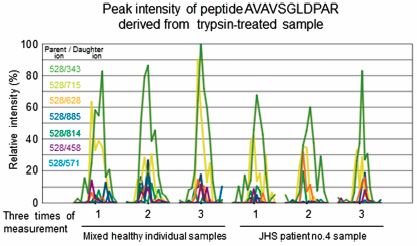- 著者
- Kazuo Yamada Atsushi Watanabe Haruo Takeshita Atsushi Fujita Noriko Miyake Naomichi Matsumoto Ken-ichi Matsumoto
- 出版者
- The Pharmaceutical Society of Japan
- 雑誌
- Biological and Pharmaceutical Bulletin (ISSN:09186158)
- 巻号頁・発行日
- vol.42, no.9, pp.1596-1599, 2019-09-01 (Released:2019-09-01)
- 参考文献数
- 15
- 被引用文献数
- 5 5
Joint hypermobility syndrome (JHS) (also termed hypermobility type Ehlers–Danlos syndrome, hEDS) is a heritable connective tissue disorder that is characterized by generalized joint hypermobility, chronic pain, fatigue, and minor skin changes. Initially, it was reported that there is a small subset of patients with JHS/hEDS who have haploinsufficiency of tenascin-X (TNX). However, the relationship between TNXB and JHS/hEDS has not been reported at all afterwards. EDS was reclassified into thirteen types in 2017, and the causative gene of JHS/hEDS remained to be identified. Therefore, in this study in order to determine whether JHS/hEDS can be diagnosed by the concentrations of serum form of TNX (sTNX), we measured the concentrations of sTNX in 17 JHS/hEDS patients. The sTNX concentrations in half of the JHS/hEDS patients were significantly lower than those in healthy individuals. No mutations, insertions or deletions were detected in the TNX exon sequence of the JHS/hEDS patients except for one in patient. That patient has a heterozygous mutation. A correlation between sTNX concentration and mutation of the TNXB genomic sequence was not found in the JHS/hEDS patients. These results indicate that the decrease in sTNX concentration could be used as a risk factor for JHS/hEDS.
